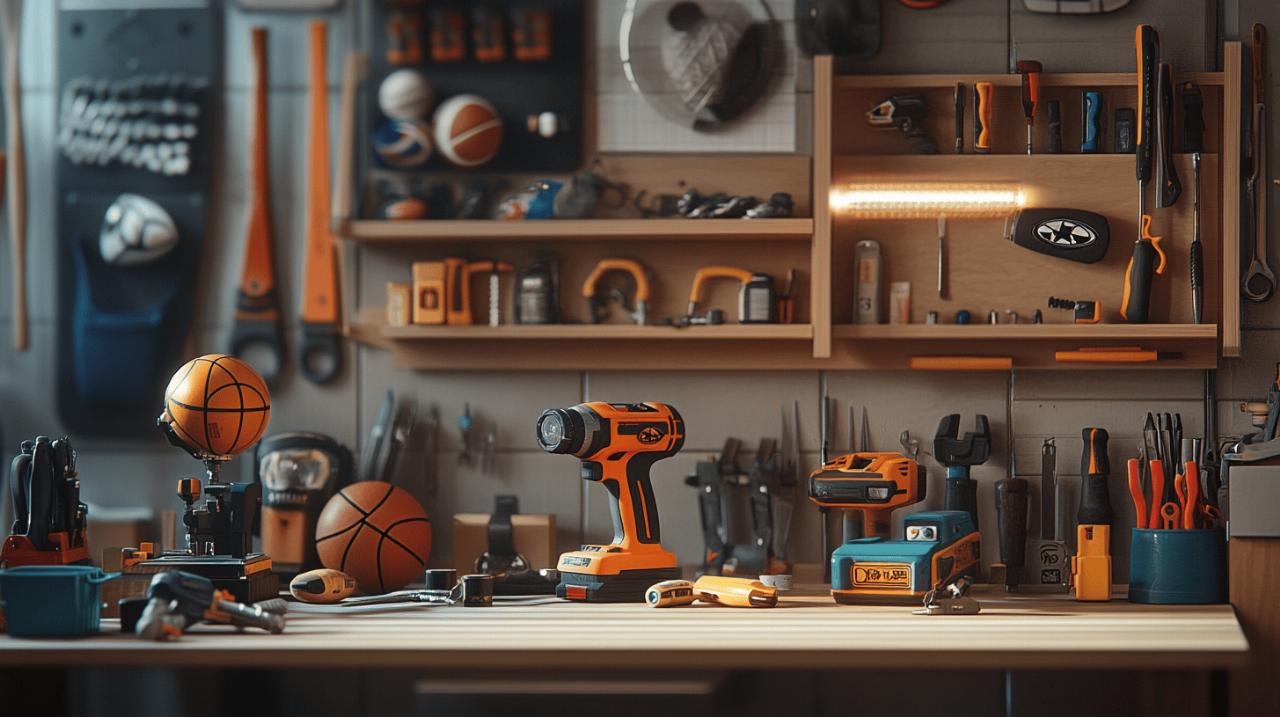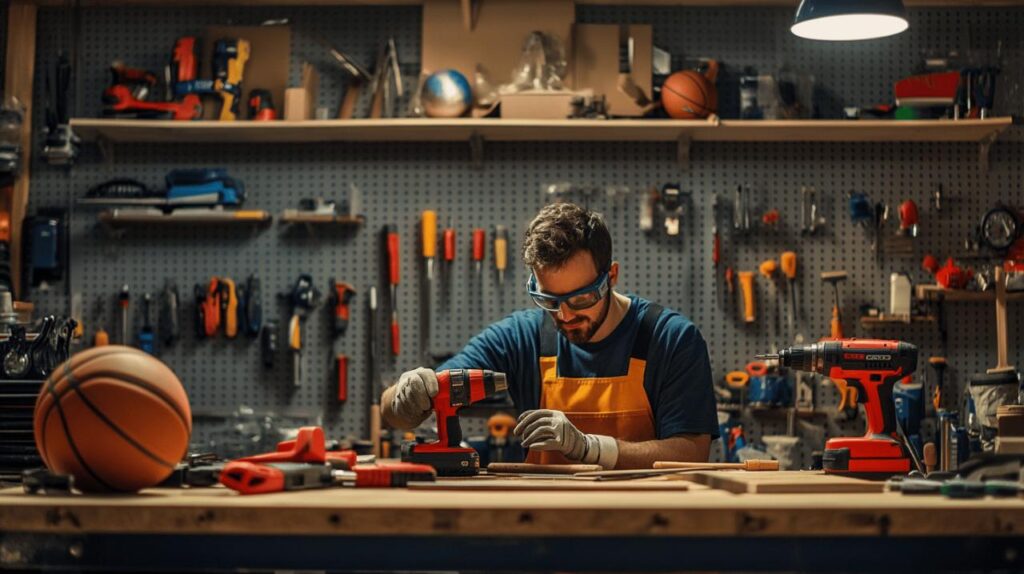Welcome to the world of DIY projects! Whether you're a seasoned handyman or just starting out, knowing how to safely operate power tools is crucial for successful home improvement. This guide will walk you through essential safety practices to help you complete your projects without mishaps or injuries.
Getting kitted out with proper protection
Before embarking on any DIY adventure involving power tools, proper protection should be your top priority. Complementos de Decoracion and other DIY projects often require cutting, drilling, or sanding, all of which can create hazards without adequate protection. Personal Protective Equipment (PPE) forms your first line of defense against potential injuries.
Essential personal protective equipment for diy tasks
Safety gear isn't optional when working with power tools; it's absolutely essential. Eye protection shields your vision from flying debris that could cause permanent damage. Hearing defenders prevent long-term hearing loss from the high decibel levels many power tools produce. Sturdy gloves protect your hands from cuts, abrasions, and burns, while dust masks prevent inhalation of harmful particles. Remember that approximately 200,000 DIY-related injuries result in A&E admissions each year in the UK – proper PPE can significantly reduce your risk of becoming part of this statistic.
Selecting the Right PPE for Different Power Tools
Different tools require specific protective equipment. When using angle grinders, wear flame-resistant clothing and impact-resistant goggles to guard against sparks and potential disc fragments. For sanders, dust extraction systems and respirator masks are vital to prevent dust inhalation. With saws, cut-resistant gloves and eye protection shield against flying wood chips and accidental contact. Match your protective gear to the specific hazards of each tool – this targeted approach ensures comprehensive protection during your DIY projects.
Preparing before you power up
Preparation is key to safe power tool operation. Taking the time to get ready before starting your work can prevent accidents and ensure better results for your projects.
Reading instruction manuals: not optional but essential
Many DIY enthusiasts skip reading instruction manuals, considering them unnecessary. This is a dangerous mistake. Manuals contain crucial information about safety features, proper usage techniques, and maintenance requirements specific to each tool. They explain warning signs of malfunction and correct operating procedures. Taking time to thoroughly read and understand the manual helps you identify potential hazards and learn the most efficient ways to use your tools. Consider it your personal training session with the manufacturer before you begin your project.
Creating a Safe and Organised Workspace
A cluttered workspace invites accidents. Ensure your work area is well-lit so you can clearly see what you're doing. Keep floors clear of obstacles that could cause trips or falls while operating tools. Arrange your materials logically so you don't need to reach across running machines. Good ventilation prevents buildup of dust and fumes, while keeping cables managed reduces tripping hazards and potential electrical dangers. Remember that power tools should not be used during noise-restricted hours – typically before 8am or after 8pm on weekdays, and before 9am or after 7pm on weekends, to respect your neighbours.
Tool maintenance and inspection
Regular maintenance keeps your tools working efficiently and safely. Neglected tools not only perform poorly but can become dangerous hazards.
Spotting Signs of Wear and Damage in Power Tools
Inspect your tools before each use to identify potential problems. Look for frayed power cords, loose parts, or cracks in casings. Check moving parts for proper alignment and binding. Unusual noises, vibrations, or burning smells during operation signal potential issues requiring immediate attention. For battery-powered tools, examine battery packs for damage or leakage. Blades and bits should be sharp and undamaged – dull cutting edges force you to apply more pressure, increasing accident risks. If you spot any concerning signs, have the tool repaired by a professional or replace it rather than risking your safety.
Regular Maintenance Routines to Keep Tools in Top Nick
Consistent maintenance extends tool life and ensures safer operation. Clean tools after each use by disconnecting power sources, then removing dust with a brush or compressed air. Wipe surfaces with a damp cloth to remove stubborn debris. Lubricate moving parts according to manufacturer instructions, typically with machine oil or silicone spray. Check and tighten any loose fasteners. For power saws and cutting tools, ensure blades remain sharp and properly aligned. Store tools in dry locations to prevent rust and electrical component damage. This regular care not only preserves your investment but significantly reduces accident risks.
Proper usage techniques
 How you handle and operate power tools directly impacts both your safety and the quality of your work. Mastering proper techniques prevents accidents while improving results.
How you handle and operate power tools directly impacts both your safety and the quality of your work. Mastering proper techniques prevents accidents while improving results.
Matching the Right Tool to Your DIY Task
Using the appropriate tool for each job is fundamental to DIY safety. When tools are used for purposes they weren't designed for, they become unpredictable and dangerous. A jigsaw excels at cutting curves in wood, metal, or plastic, while masonry saws are specifically designed for bricks, stone, and concrete. Wall chasers create precise grooves for electrical cables, and routers cut specific profiles in woodworking projects. Attempting to substitute one tool for another might seem convenient, but it often leads to poor results and increased accident risks. Take time to assess each task and select the proper tool – your project will look better and you'll work more safely.
Maintaining stability and control while operating
Proper stance and grip are crucial when operating power tools. Stand with feet shoulder-width apart to maintain balance, positioning yourself to avoid awkward reaching or twisting. Hold tools with both hands whenever possible, using designated grip areas. For cutting tools like saws and grinders, secure your workpiece firmly with clamps rather than trying to hold it by hand. Allow the tool to reach full speed before making contact with materials, and don't force tools through their work – let the tool do the cutting at its own pace. These practices ensure you maintain control throughout operation, significantly reducing accident risks.
Electrical safety considerations
Electricity adds an additional layer of hazard when working with power tools. Understanding and respecting electrical safety principles prevents shocks, fires, and other serious accidents.
Safe disconnection practices when making adjustments
Never adjust, clean, or change accessories while a tool is connected to power. Always switch off and unplug corded tools before making any adjustments or changing blades and bits. For battery-powered tools, remove the battery pack completely. Wait for all moving parts to stop completely before setting the tool down or making changes. When changing saw blades or drill bits, follow manufacturer instructions precisely, using the correct size wrenches or hex keys. These precautions prevent accidental startups that could result in serious injuries to fingers and hands.
Managing cables and power sources safely
Electrical cords present both tripping and shock hazards. Route power cables away from cutting paths and areas where they might be damaged during work. Inspect cords regularly for cuts, cracks, or exposed wires, replacing damaged ones immediately. When using extension cords, choose ones rated for the amperage of your tools, and never daisy-chain multiple cords together. Keep connections dry and elevated off wet surfaces. For outdoor work, use only extension cords rated for outdoor use and plug into outlets protected by Ground Fault Circuit Interrupters (GFCIs). These practices prevent electrical accidents that could lead to shocks or fires.
Environmental awareness and storage
Being mindful of your surroundings and properly storing tools when not in use completes a comprehensive safety approach to DIY projects.
Keeping an Eye Out for Hidden Hazards
Always assess your work environment for unseen dangers before beginning. Use cable detectors before drilling into walls to avoid hitting electrical wires or pipes. Be aware of load-bearing structures that shouldn't be modified. Check for asbestos or lead paint in older homes before cutting, sanding, or demolishing. Consider ventilation needs, especially when using tools that generate dust or when working with adhesives, paints, or solvents. Watch for trip hazards, overhead obstacles, and be mindful of others who might enter your workspace unexpectedly, particularly children and pets.
Proper storage solutions for power tools
When your work is complete, proper tool storage prevents damage and unauthorized access. Store power tools in dry locations to prevent rust and electrical component damage. Use original cases where available, or dedicate cabinets with custom inserts or wall-mounted systems. Keep tools out of reach of children, ideally in locked storage. Never store tools with blades or bits installed. For battery-powered tools, remove and charge batteries according to manufacturer recommendations. Organized storage systems with labels help you quickly locate tools for future projects while keeping them protected between uses. These practices extend tool life while preventing accidents from improper access or damaged equipment.

